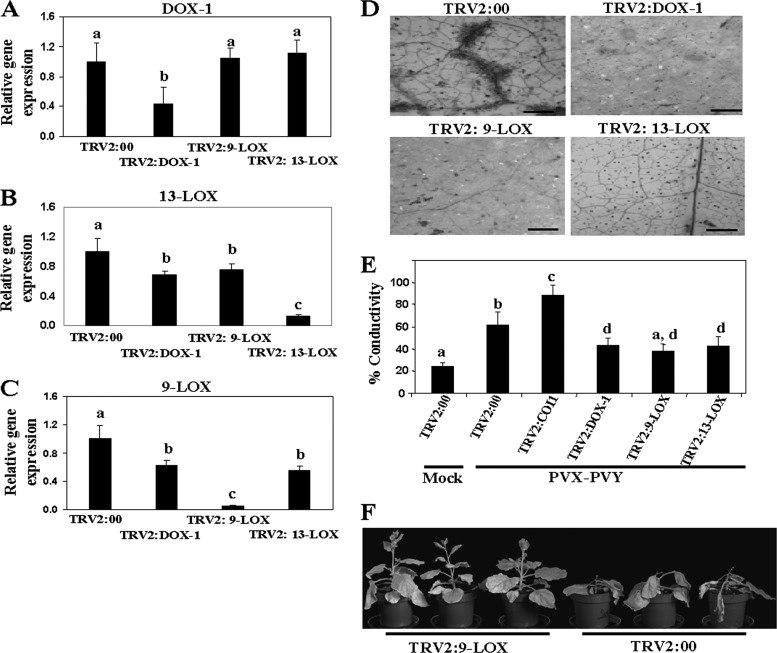Fig 2.
Silencing of N. benthamiana 9-LOX, 13-LOX, and α-DOX-1 result in attenuated cell death induced by PVX-PVY infection. (A to C) Three-week-old N. benthamiana plants were infiltrated with Agrobacterium containing TRV2:DOX-1, TRV2:9-LOX, TRV2:13-LOX, or TRV2:00 (vector control). The relative levels of expression of α-DOX-1 (A), 13-LOX (B), and 9-LOX (C) were estimated by qRT-PCR 10 days after infiltration (d.a.i.). Expression of the 18S rRNA gene served as a control. (D) Plants agroinfiltrated with TRV2:DOX-1, TRV2:9-LOX, TRV2:13-LOX, TRV2:COI1, or TRV2:00 (vector control) were inoculated with PVX-PVY at 10 d.a.i. Uppermost leaves of control and VIGS-treated plants were stained with trypan blue to detect cell death at 8 days postinoculation (d.p.i.). Scale bars = 0.1 mm. (E) Leaf discs were excised and assayed for electrolyte leakage at 8 d.p.i. Data represent the means ± standard errors of five replicates, each consisting of three to five plants that received the same treatment. Statistically significant differences between means were determined by employing Duncan's multiple range test. Different letters indicate significant differences at a P value of 0.05. (F) Effect of 9-LOX silencing on PVX-PVY infection at 12 d.p.i. Control plants exhibited the typical necrosis symptoms associated with the synergistic viral interaction, while 9-LOX-silenced plants exhibited mosaic symptoms but not systemic necrosis.

